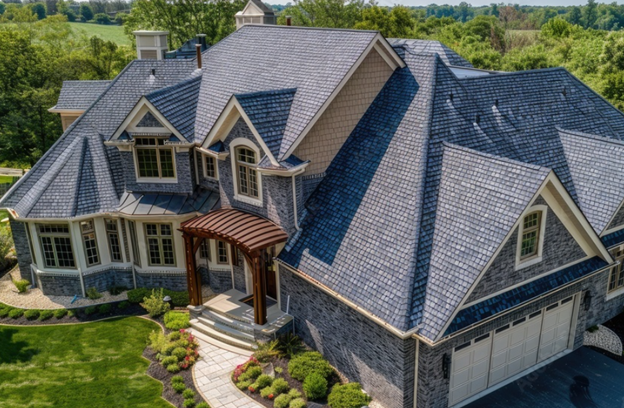A commercial roof is the unsung hero of your building, protecting your business assets, employees, and customers from the elements. However, even the most resilient roof has a finite lifespan. When the time comes for a commercial roof replacement, choosing the right window in the calendar is crucial. Let’s delve into the key factors to consider when selecting the optimal time for your project.
Understanding Climate:
Weather conditions significantly impact the success and ease of a commercial roof replacement. Here’s a breakdown of considerations for different climates:
Spring (Ideal in Drier Climates):
- Benefits: Spring often offers moderate temperatures and clear skies, making it ideal for working with roofing materials and ensuring proper sealant curing.
- Drawbacks: Spring can be unpredictable in some regions, with occasional rain showers that might cause delays.
Summer (Ideal for Some Materials):
- Benefits: Long summer days offer ample daylight hours for crews to maximize work time. Certain roofing materials, like hot asphalt, perform better in warmer weather for optimal application.
- Drawbacks: Extreme heat can be challenging for both roofing materials and crews. Summer storms can also lead to project interruptions.
Fall (Ideal in Many Regions):
- Benefits: Fall offers a sweet spot with comfortable temperatures and generally drier weather compared to spring. Most regions experience a lull in extreme weather events during this time.
- Drawbacks: Daylight hours progressively decrease, potentially impacting work schedules in the latter part of the fall.
Winter (Not Ideal, But Possible):
- Benefits: Winter can offer competitive pricing from roofing contractors due to lower demand. Certain roof replacement methods, like single-ply membrane systems, can sometimes be installed in colder weather.
- Drawbacks: Winter weather with snow, ice, and freezing temperatures can significantly delay or halt construction. Roofing materials might not perform as well during application in extreme cold.
Consider Your Business Operations:
The timing of a roof replacement should also align with your business needs:
- Seasonal Fluctuations: If your business experiences seasonal highs and lows in activity, schedule the replacement during a slower period to minimize disruption. For example, a retail store might prefer to avoid the busy holiday season for a roof replacement project.
- Inventory and Production: If your business involves storing inventory or running a production line, ensure the roof replacement doesn’t disrupt these crucial processes. Plan the project when production is low or inventory levels are manageable.
- Customer Impact: Minimize disruption to your customers by considering factors like noise, dust, and potential access limitations during the project. Communicate clearly with customers about the planned work and its duration.
Additional Factors to Weigh In:
- Material Availability: Lead times for certain roofing materials can fluctuate. Factor in potential delays when choosing a replacement time and discuss material availability with your chosen roofing contractor.
- Project Scope and Complexity: The complexity of the roof replacement project can influence the ideal timeframe. Larger, more complex projects might require scheduling well in advance to accommodate the time needed for completion.
- Permitting and Inspections: Obtaining necessary permits and scheduling inspections can add some time to the project timeline. Factor this in when choosing a replacement window.
Making the Best Decision:
There’s no single “best” time for commercial roof replacement. The optimal window depends on a unique combination of factors specific to your location, climate, business operations, and project details. Here’s how to make an informed decision:
- Consult a Qualified Roofing Contractor: A reputable roofing contractor with experience in your region can provide invaluable insights into the best time for roof replacement based on local weather patterns and roofing material considerations.
- Analyze Your Business Needs: Assess your business operations and identify any periods where a roof replacement would cause minimal disruption.
- Consider Weather Patterns and Forecasts: While historical weather patterns are indicative, factor in long-term weather forecasts and the potential for unexpected events.
Remember:
A successful roof replacement requires careful planning and timing. By considering all the factors mentioned above and working with a qualified roofing contractor, you can choose the golden window for your project, ensuring a smooth, efficient, and minimal disruptive roof replacement. A well-maintained roof protects your business year-round, so invest time in selecting the right time for this crucial investment in your commercial property.




